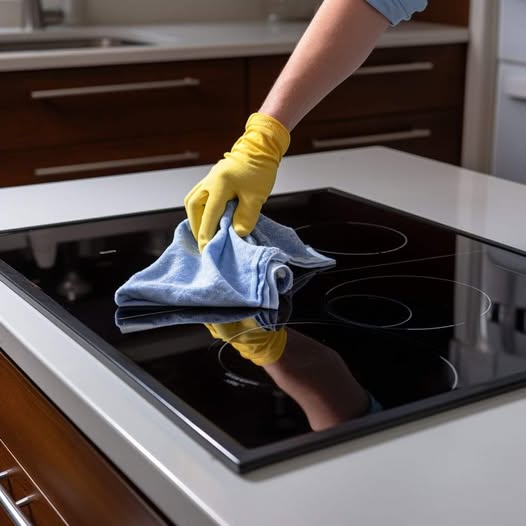ADVERTISEMENT
6. Use a Non-Scratch Sponge
When scrubbing your stove, always use a non-scratch sponge to avoid damaging the glass. Abrasive sponges or steel wool pads can cause scratches, making it harder to clean your stove in the future. Opt for a soft sponge or microfiber cloth to ensure a smooth, scratch-free clean.
7. Tackle Burnt-On Food with Steam
For those tough, burnt-on food stains, try using steam to loosen the debris. Fill a small bowl with water and heat it in the microwave until it’s steaming. Place the bowl on the stove and let the steam soften the burnt food. Once the area cools down, use a cloth to wipe away the residue.
Alternatively, you can heat a damp towel in the microwave and place it over the stubborn spots for a few minutes. This method will help lift up even the most persistent stains.
8. Regularly Polish the Surface
After each cleaning session, consider polishing your glass stove to give it an extra shine. You can use a dedicated glass stove polish or make your own by mixing a little olive oil with vinegar. Apply a small amount to a clean cloth and buff the surface of the stove, focusing on any areas with streaks or residue. Polishing will also help keep the glass smooth and resistant to future stains.
9. Keep the Stove Vent Clean
The stove vent plays an essential role in keeping your kitchen air clean and free from cooking odors. If the vent is dirty, it can circulate grease and grime back onto your stovetop. Be sure to clean your vent regularly to prevent grease buildup. This will help reduce the amount of grime that settles onto your stove and make it easier to clean overall.
Bonus Tips:
- Avoid Heavy Scratching: While it’s tempting to scrub vigorously, avoid using harsh cleaning tools that could damage the stove’s surface. Always choose soft cloths and non-abrasive sponges to protect the glass.
- Prevent Future Stains: To reduce the buildup of grease and grime, try to cover pots and pans with lids while cooking. This will help prevent splattering and minimize the amount of cleaning required afterward.
Conclusion: Sparkling Clean in No Time!
Cleaning your glass stove doesn’t have to be a hassle. With the right methods, like using a glass stove cleaner, natural ingredients like baking soda and vinegar, or simple tools like a razor blade scraper, you can restore your stove to its original shine. By adopting good cleaning habits, such as wiping down the stove after each use and polishing the surface regularly, you’ll keep your glass stovetop looking brand new for years to come.
So, next time you notice your stove getting dirty, don’t stress—just use these 9 tips and make your glass stove sparkle like the day it was installed!
